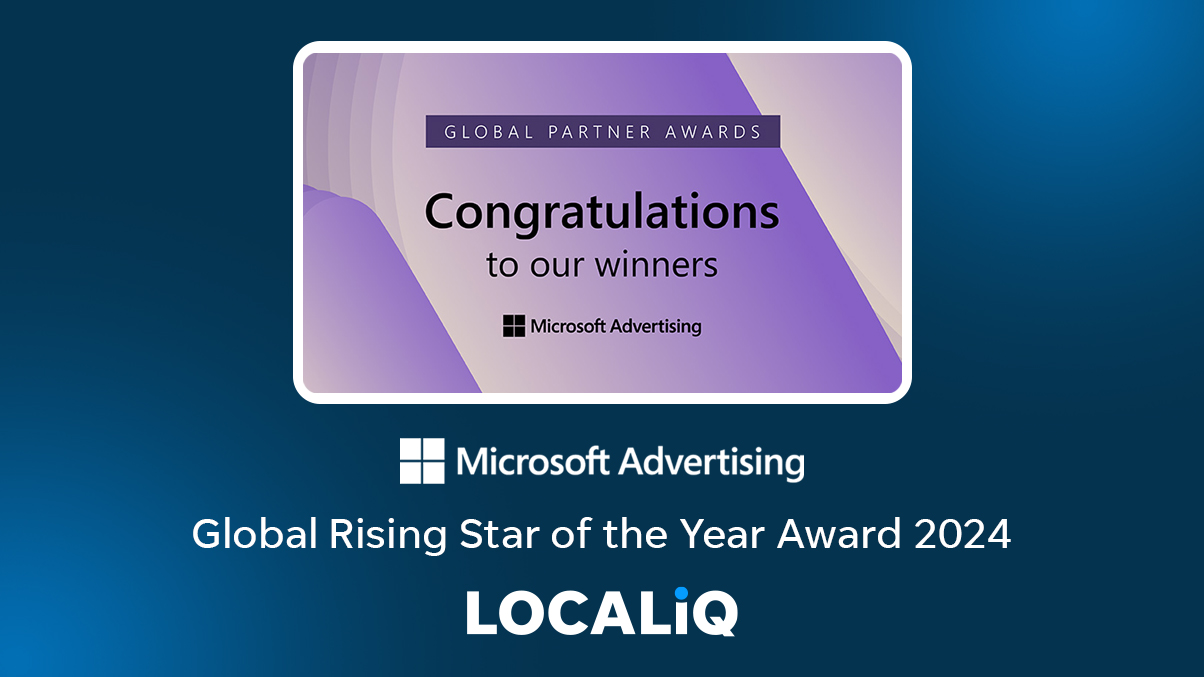Getting your educational institution found online is a never-ending battle that necessitates a variety of techniques for various objectives. Both search engine optimisation (SEO) and pay-per-click (PPC) campaigns are included in search engine marketing (SEM). Both of these tactics can be used to drive traffic to your educational institution’s website, blog, or other digital assets, such as a landing page or microsite promoting a new programme. Both strategies can drive traffic, but they have different advantages. To get the most out of your money, you need to adopt the appropriate technique for the right reasons.
What is a search strategy?
When you combine organic search engine optimisation with pay-per-click to meet your website goals, you have a search strategy.
SEO: Organic search
You want prospective students and parents to see the right pages in their search when they are looking for programmes or other information about your institution. The practice of optimising your website so that your audience may find it easily when searching for your education institution or related phrases is known as SEO. One of the best things about SEO is that you don’t have to pay when people click on your link.
PPC: Paid search
PPC is a form of online advertising in which a business is charged a fee each time one of its adverts is clicked. Universities and other institutions are now paying for their adverts to appear alongside organic search results. Paid search results are normally displayed above organic results, with a small sponsored disclaimer.
Both of these tactics are effective and can be combined to promote your institution.
Why use SEM for your educational institution?
Organic search engine optimisation and pay-per-click search advertising are two alternative marketing tactics that are referred to as SEM. Both are very valuable strategies to get the word out about your institution to people who utilise search engines. PPC necessitates a direct financial input because you must bid on placement to have your adverts appear at the top of search results. On the other hand, while optimising your website pages for SEO is technically free, doing it successfully takes a lot of effort and investment. Simply said, search engines continue to be the most common means of locating and searching for information on the internet. It’s no different when it comes to looking into suitable educational institutions. Investing in search engine marketing can help you get more awareness, increase its prestige, attract new web traffic in the process, and help you on the path to increasing enrolment. SEM is a multi-faced marketing strategy that times time to master. However, if you begin by following key best practices, you’ll be well on your way to seeing a return on your investment (ROI).
What are the differences between SEO and PPC?
Building a strong content foundation that wins you more attention over time is the goal of SEO. It’s a low-cost, long-term investment with a moderate rate of return. However, there will come a moment when your SEO-optimised digital assets will generate exponential returns. Its worth isn’t limited to a few high-performing pages, rather, the collective value begins boosting new content as well. The authority your site gains over time, the more authority it will have on subsequent content you publish on it. Your SEO-optimised pages provide a steady stream of visitors. Infusing SEO best practices into all of your digital assets should be a normal procedure for every piece of digital content your institution publishes. A PPC campaign, on the other hand, is a fixed-time campaign with large upfront costs that can provide quick, meaningful results. Your PPC campaign, like your SEO, will be built on a keyword plan. Unlike SEO, a PPC campaign only generates revenue for the amount of time you pay for ad space.
When and how should you use SEO?
When it comes to when the answer is always. As previously stated, SEO is the basis that will propel your website and blog up the search engine results page (SERP). Almost everyone prefers to click on a first-page link in their search results over a PPC ad. Of course, ranking for “business school” won’t be easy (it’s a very competitive keyword). If you employ long-tail keywords (TLKs), which are queries that contain the language your prospective students use to search for what they want, your SEO approach will bring you the most relevant visits. If you are an educational institution offering a marketing management programme with an online component “online business management programme”, would be a better fit. Long-tail keywords that are related to your personas will attract a more engaged and qualified audience. You must implement your SEO plan through on-page and off-page optimisation after researching and identifying the most relevant collection of long-tail keywords.
On-page SEO
This is the area in which you have the most control. On-page SEO employs a variety of techniques to integrate a page’s keyword across the page. This does not imply that you must use the keyword repeatedly throughout your writing, instead, you’ll use the keyword a few times throughout. If your programme page is actually about an online business management programme, you’ll write organically, since Google looks for the phrases, it expects to see. As a result, Google may anticipate seeing other business-related phrases. You can also use your chosen keywords in a number of tags (such as title tags, meta tags, header tags, and descriptions). Because some of these elements (e.g., your URL) appear in search results, they’re crucial to getting the click. Other tags (such as alt-tags, which are intended to optimise images) are not always visible to visitors. However, the search engine bots decide where your page should be ranked, see, and use them. In terms of SEO, your title tag is arguably the most crucial, but don’t forget any of the others. Other on-page strategies to remember are to give the page a quick loading time and to include social sharing icons so that people can share your amazing content!
Tip: Keep an eye on recent changes to Google’s on-page tag properties (it’s a good idea to give your website an SEO refresh when these changes occur).
Off-page SEO
When high-authority sites link back to your fantastic content, this is referred to as off-page SEO. You have little influence over this because it relies on other websites liking and linking to your content. You may help this process along by including numerous social sharing cues in your content. All of your pages, posts, and emails should have social sharing icons. And there’s more you can do. By urging people to share, you may write content that encourages them to do so. You can also provide them with pre-made Tweets and Shares in your content, for them to use. People will be more inclined to link back to your blog posts and web pages as they become more widely known.
When and How Should You Use PPC?
PPC is more tactical than SEO, which is more strategic and ongoing. The ads that appear at the top of your search results are known as PPC ads. Because a PPC campaign only lasts as long as you’re prepared to pay for it, you’ll want to save it for when you’re promoting something really specific. Using our business management programme as an example, if this is a new programme and you want to raise awareness as well as attract immediate potential students, a PPC campaign would be a suitable fit. Growing your funnel numbers for the following year while they’re a little low could be a second spot for a PPC campaign. A PPC campaign might help you get the proper amount of applicants if you need a bump in prospects. Keep in mind that you are looking for people in the attraction stage in this case (top of the funnel). It’s more probable that they’re already thinking about it (middle of the funnel). As a result, choose your promoted keywords and content wisely.
As a quick reminder: You can think of SEO as always-on search engine marketing, whereas PPC is your special occasion SEM. Each is important but in different proportions and places.
So, as an educational institution, where do you start? There’s a lot to learn about these multifaceted marketing strategies, but we’ve narrowed it down to some best practices and concrete advice to help you get started.
SEO Best Practices for Educational Institutions
Here are five best practices to start your SEO strategy off on the right foot:
1. Start with an SEO audit
Content takes time to rank well in keyword searches since SEO is an organic, long-term strategy. To begin, determine which keywords your site now ranks well for and which keywords you wish to rank for in the future. After you’ve evaluated your site’s existing performance, you can improve the pages that are already performing well and devise tactics to improve the pages that aren’t ranking well using more appropriate keywords.
2. Enhance the user experience
Prior to focusing on keywords in your web content, there are a few basic, technical characteristics of your site’s user experience that also influence SEO and rank factors:
- Test and improve your page speed: Due to modern expectations of load speeds, page speed has an impact on both your rank factor and your bounce rate. Certain tools, like Test My Site by Google, for example, may test your site’s speed and provide suggestions for improving page load time.
- Make it mobile-friendly: Google emphasises mobile-friendly pages, despite the fact that 71% of students access educational institution websites via mobile devices. Choose a responsive web design that automatically adjusts to the size of the device. Then, make sure that all of your pages, particularly legacy pages, are changed to reflect the new design.
- Check for duplicate content: Due to numerous departments having their own pages, blogs, or digital publications, educational institutions typically have a lot of duplicate content. But search engines penalise sites that have duplicate content. To avoid being penalised, utilise a digital tool to find and eliminate duplicate pages.
- Submit a sitemap: Create and upload a sitemap to Google Search Console once you’ve completed optimising your site to lead Google bots toward indexing and prioritising your site pages. To build and submit a site map, simply follow Google’s instructions.
3. Let your value propositions lead your keyword research
When brainstorming targeted keywords for your keyword strategy, remember to keep your value propositions in mind. Consider whether your educational institution specialises in a particular programme or offers complete degrees online. Then, using a tool like Keywords Everywhere, come up with a list of words that are connected to your value propositions. These tools will display similar keywords, long-tail searches (searches that are lengthier and more specialised), and questions users have about your core keywords. Then, to construct keyword clusters, arrange related queries and terms together. This ensures that your keywords are related to your education institution’s specific offers while still being relevant to student and parent searches. If you’re just getting started with keyword research, we recommend focusing on long-tail keywords because they’re the simplest method to target very particular audiences and drive relevant organic traffic to your site.
4. Content should be optimised properly
Optimise the content on your most important pages first, such as department or programme pages, and then venture to the less vital pages, like student organisation blogs. Though it may seem self-evident to naturally disperse your keywords throughout your text, it’s all too simple to overdo it by putting in as many keywords as possible. Keyword stuffing not only degrades the quality of your content but also hurts your SEO. Here are the key areas where your target keywords should appear to ensure you’re not hurting your SEO:
- In the title of the page of in the H1 tag.
- Occasionally in the text’s body.
- In the page’s meta title and description.
Create high-quality links
For an educational institution’s SEO success, link building is just as crucial as keyword optimisation. Internal linking should be emphasised by including links in your content to connect pages. Be sure to make the anchor texts of your links descriptive to help search engines comprehend what your content is about. Then, to connect your educational institutions and their educational programmes to high-quality directories, start generating external links from other high-quality sites. Remember: Look for links from other prestigious educational institutions as well. Alternatively, if your institution is focused on research, focus on linking recently realised studies from high-authority sites to your department websites.
PPC best practices for your educational institution
Your educational institution can use a complementary PPC plan to help with organic SEO. PPC is especially useful for gaining a rapid presence in search results while you work on your organic SEO. You can also use PPC to target conversation-related keywords that individuals look for when making significant educational decisions.
The following are five effective techniques for maximising PPC:
1. Don’t bid on phrased that are “branded”
When you bid on branded terms, you are bidding on your institution’s name. While this is beneficial for e-commerce businesses looking to divert visitors away from competitors, it is not a good investment for institutions. Why? Other institutions are unlikely to bid on your institution’s name. If you search for your university name in an incognito browser, you can immediately see if this is the case. (If you notice paid ads for other institutions, you might want to consider bidding on your own). The majority of people searching for your education institution by name are most likely present students, followed by teachers or employees looking for a quick way to go to your homepage. This implies that if an existing student or faculty member clicks on your ad, you must still pay for the conversion.
2. Keep keyword intent and relevancy in mind
If you want your educational institution’s ads to show up for those looking to apply for a degree programme, you’ll want to include keywords that reflect where they are in their academic path. Consider one of your degree programmes, such as a marketing and retail undergraduate degree. You could target “marketing and retail”, but your advertisements might show up in front of people who are looking for jobs within this industry. Remember to utilise particular keywords like “marketing and retail” and “bachelor’s degree” to target the relevant audience. Your target keywords will be more likely to reach relevant users at the right time if they are more specialised and relevant.
3. Consider the journey beyond your ads
It’s crucial to attract traffic to your institute’s website, but if you want your PPC advertisements to persuade prospective students to apply to your programmes, consider the phase in their student journey path after clicking on your ad. The ad should not direct visitors to a generic landing page or the department’s main website. Create one of a kind landing page that emphasises the programme depending on the interest and needs of those potential students. The goal of paying for clicks is for your education institution’s website content to persuade prospective students to apply. As a result, offer them content that provides them with a clear overview of the programme and a clear call-to-action, such as requesting additional information about the programme.
4. Test and tailor your ad copy
Although it may appear straightforward, tweaking your ad copy can have a significant influence on click-through rates. Institutions that use terms like no application fee necessary in their advertisements are emphasising their unique selling points in order to attract attention and clicks. Test whatever information you want to highlight in your ads with your target audience. Changes to headlines, calls-to-action, and ad extensions are used by some digital analytics tools to create ad variations. Some programmes also automate the rotation of these variations, making it simple to find the most efficient ad copy combination for boosting clicks.
5. Adapting your strategy based on performance
When it comes to testing performance, it should be ingrained in your organisation’s culture to check in on your PPC campaigns on a regular basis to evaluate which keywords, ad text, and bid strategies are most effective in achieving your objectives. If you use a tool like Facebook Ads, you’ll notice that certain keywords are extremely competitive and pricey. This may persuade you to increase your bids on related keywords that help you achieve your search strategy objectives. You can then spend less money on keywords that don’t provide results.
Recruiting prospective students online is a channel that cannot be overlooked as search engines continue to dominate decision-making. You may increase the probability of student engagement and applications by prioritising your search engine efforts. You’ll be able to conduct a successful search marketing campaign if you follow these tips and best practices for organic SEO and PPC strategies. As your efforts deliver results, it will be easier to gain more organisational support for investing in optimisation and automation solutions, resulting in even higher ROI.
Read NPTC College’s success story from working with us, at LOCALiQ, to learn how many conversions search engine marketing can produce.




